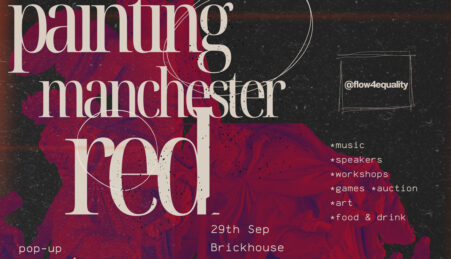
Humanity Hallows Issue 4 Out Now!
.Pick up your copy on campus or read online.
By Yasmin Al-Najar
It is clear that gender stereotypes affect men as well as women, though, arguably, both genders do not experience it on the same scale. Society has constructed men and women as binary opposites: men are the financial providers, independent, strong and rational, whereas women are seen as weak and irrational, dependent on others, and are confined to the domestic realm.
The beauty, advertising and film industries dictate that women must aspire to society’s unattainable image of perfection. Predominately adverts use young, fair-haired, fair-skinned, slim women, an image represented as the ‘norm’ or ‘ideal beauty’. Maybelline beauty cosmetics have been heavily criticised. Members of the public have noted that they have made little effort to introduce diversity into the industry. Often, their adverts circulate the ‘ideal’ blonde haired and blue-eyed woman, and hardly any of their foundations match darker skin tones.
The media has been accused of reinforcing ‘beauty ideals’ and gender stereotypes instead of challenging them. Celebrities have criticised magazines for airbrushing photo-shoots, suggesting that they project a false image of beauty and place too much emphasis on a woman’s sex appeal.
Twenty-eight year old, Canadian model, Coco Rocha, criticised magazine, Elle Brazil, after they had edited her image. Expressing her concerns on Tumblr, she wrote:
“As a high fashion model I have long had a policy of no nudity or partial nudity in my photoshoots. For my recent Elle Brazil cover shoot I wore a body suit under a sheer dress, but recently discovered that the body suit was photoshopped out to give the impression that I am showing much more skin than I actually was or am comfortable with. This was specifically against my expressed verbal and written direction. I’m extremely disappointed that my wishes and contract were ignored. I strongly believe every model has a right to set rules for how she is portrayed and for me these rules were clearly circumvented.”
American actress Gabourey Sidibe was featured in Elle Magazine in 2010, but her dark skin was considerably lighter on the cover image. Some accused the magazine of trying to conceal the actress’s size. Cover girls like Megan Fox, Amanda Seyfried and Lauren Conrad are shown in full-length photographs, while Sidibe’s image is cropped at chest level. Elle denied the accusations of purposely lightening Sidibe’s skin or trying to hide her body. However, this is not an isolated case; Halle Berry, Kerry Washington, Beyoncé and Rihanna have suggested that editors have whitewashed their skin.
In October of this year, the United Nations (UN) named Wonder Woman as an ‘Honorary Ambassador’ for the ‘Empowerment of Women and Girls’. This decision was both praised and criticised. Whilst many have praised the decision, stating that the figure represents a strong, independent female, some members of the UN were outraged that they had chosen a fictional character based upon male fantasies. Others have strongly expressed that the choice of character was an inappropriate symbol for female empowerment. They suggested that Wonder Woman possesses an “overtly sexualised image” that is not “culturally encompassing or sensitive”; a tall, white female, wearing tight clothes and the American flag does not represent all.
Most of us take the ‘norm’ for granted and have never questioned its meanings, purposes or implications. However, when you recognise that the ‘norm’ is a social construction, it will change your perception of the world and everyday occurrences. It is vital that current societal values are discussed and challenged because it can shape people’s attitudes towards ‘norms’ and influence the way in which society and future generations think and behave.






Leave a reply